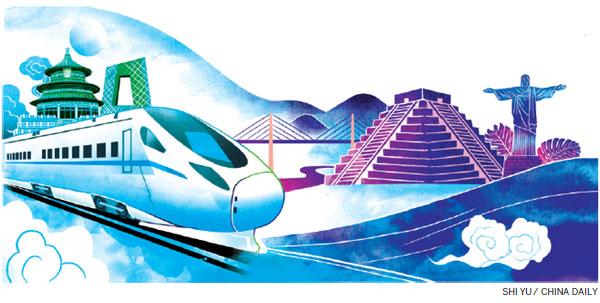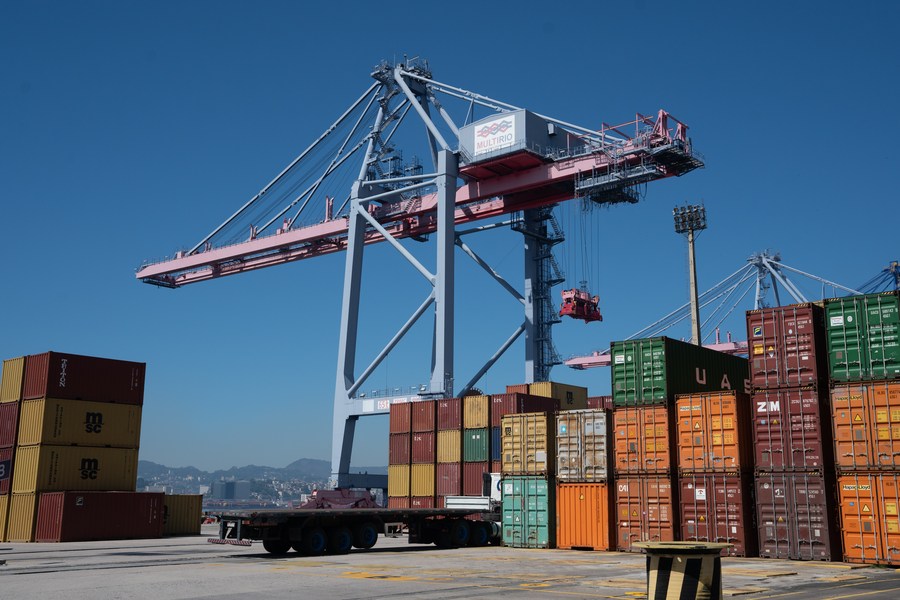By Renato Baumann

[Photo by Shi Yu/China Daily]
Economic exchanges between Latin America and China have gained momentum since the 1990s, especially through trade between China and Latin American countries on the Pacific coast but have gradually spread to, and intensified in, other areas.
China is the main trading partner of several Latin American countries, and direct investment from China in Latin America and the Caribbean has remained above $4.5 billion a year. This has made the region an important destination for Chinese investment. The region now attracts resources similar to those destined for the United States and the European Union.
Another dimension of Sino-Latin American ties is the amount of loans provided by China for the Latin American and Caribbean economies. According to Boston University Global Development Policy Center, from 2005 to 2022, China lent $136 billion to these countries, about 82 percent of which was invested in the energy sector mostly in Argentina, Brazil, Ecuador and Venezuela.
Even though the energy sector has attracted by far most of the loans, Chinese interest in Latin America is diversified in terms of sectors. For example, Brazil intends to jointly develop semiconductors with China. Also, Chinese companies are building subways in Bogota, and China is buying lithium mines in Argentina, as well as renewing its swap agreements with the country. Recently, Chinese-made electric vehicles have found a potentially big market in South America.
Chinese investment in transportation infrastructure, too, has increased. The $3.6 billion mega-port in Chancay, Peru, built by COSCO and to be inaugurated later this year, is bound to become an important export and import hub for South America, especially for trade between South American countries and China and other Asian countries. The port will reduce transportation time by one-third, benefiting exporters from countries such as Brazil, Colombia, Bolivia, Venezuela and Guyana. Those that stand to especially benefit from this new facility are producers of soya, corn, meat and different types of minerals.

This photo taken on March 20, 2023 shows a container terminal at Rio de Janeiro Port in Brazil. [Photo by Wang Tiancong/Xinhua]
This increase in Chinese presence in Latin America has often led some analysts to gauge the reaction of the US, given the frequent reference to the so-called Monroe Doctrine ("America for the Americans").
At least until recently, the official position of the US was one of favoring competition, as it believed more players are good for healthy competition. But that has changed somewhat after Chinese investments increased in the energy sector and some strategic minerals. The rise in the trade of minerals has evoked reactions from the US Army Southern Command, which has raised concerns over the possibility of China getting easier access to strategic minerals in the region.
Furthermore, the potentially important role the Chancay port, after completion, seems set to play has raised some Western countries' worries that the Chinese navy may use the port not only for commercial purposes but also as a geostrategic tool.
Yet such fears have not prompted Latin American countries to boost trade relations with their traditional major trading partner. Instead, the Latin American countries have simultaneously maintained good economic and diplomatic relations with both the US and China, and there is no indication of any change in their position in the near future.
One cannot say there has been no pressure on the Latin American countries, given that the US often refers to security issues related to Chinese products or companies, and says that there should be an orchestrated movement against China's human rights policy.
Most Western states remain committed to the international mechanisms for human rights protection, because they view them as a source of morality and legitimacy, and believe states can be "punished" for violating the agreed parameters classifying policies on human rights.
China's policy on human rights is a bit different. It views human rights not only in legal terms, but also accords priority to socioeconomic rights and the right to development, and insists that laws to protect human rights be enforced according to each country's national conditions.
Latin America accepts that there may be differences on specific issues due to the peculiarities of each society, and hence opts for non-interference, whereas China does not seem to be trying to convince other states of its position. Acting separately on such sensitive matters has allowed the two sides to strengthen their partnership and seek common development.
The author is coordinator of External Economic Relations at the Institute for Applied Economic Research (IPEA), Brazil.

 中文
中文



